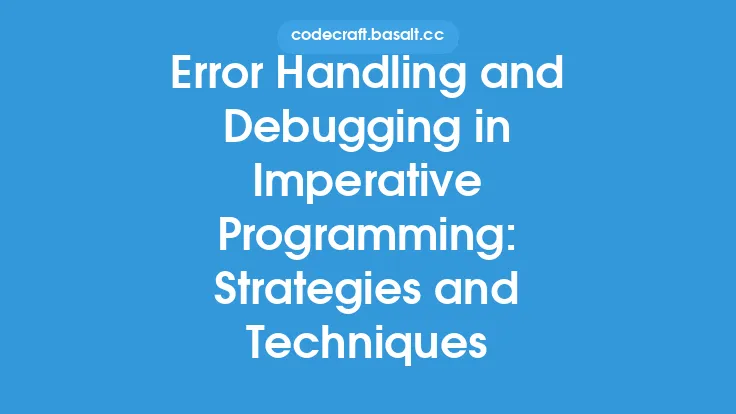As software developers, we strive to write clean, efficient, and maintainable code. However, even with the best intentions, code can become cluttered, convoluted, and difficult to understand over time. This is where the concept of code smells and refactoring comes in. Code smells are indicative of deeper problems in the code, such as tight coupling, duplication, or poor design. Refactoring is the process of restructuring existing code to make it more maintainable, efficient, and easy to understand without changing its external behavior.
Introduction to Code Smells
Code smells are not bugs, but rather a set of characteristics that may indicate a problem in the code. They can be thought of as a "bad smell" that something is not quite right. Code smells can make the code harder to understand, maintain, and extend. Some common code smells include long methods, switch statements with many cases, and duplicated code. These smells can be caused by a variety of factors, such as poor design, lack of testing, or inadequate refactoring. By identifying and addressing code smells, developers can improve the overall quality and maintainability of their code.
Types of Code Smells
There are many different types of code smells, each with its own set of characteristics and potential problems. Some common code smells include:
- Long Method: A method that is too long and complex, making it difficult to understand and maintain.
- Switch Statements with Many Cases: A switch statement with many cases can be difficult to read and maintain, and may indicate a need for polymorphism.
- Duplicated Code: Duplicated code can make maintenance more difficult, as changes need to be made in multiple places.
- Dead Code: Code that is never executed, such as unused methods or variables.
- God Object: An object that has too many responsibilities and is difficult to maintain.
- Shotgun Surgery: A change that requires modifying many different parts of the code, indicating a lack of cohesion.
- Feature Envy: A method that uses or modifies the data of another object, rather than its own.
Refactoring Techniques
Refactoring is the process of restructuring existing code to make it more maintainable, efficient, and easy to understand without changing its external behavior. There are many different refactoring techniques, each with its own set of benefits and potential pitfalls. Some common refactoring techniques include:
- Extract Method: Breaking down a long method into smaller, more manageable pieces.
- Rename Variable: Renaming a variable to make its purpose more clear.
- Consolidate Duplicate Conditional Fragments: Removing duplicated code by consolidating conditional fragments.
- Remove Dead Code: Removing code that is never executed.
- Introduce Polymorphism: Using polymorphism to simplify switch statements and make the code more flexible.
- Extract Class: Breaking down a large class into smaller, more manageable pieces.
Best Practices for Refactoring
Refactoring can be a complex and time-consuming process, but there are several best practices that can help make it more effective. Some of these best practices include:
- Test-Driven Development: Writing tests before refactoring to ensure that the code still works as expected.
- Continuous Integration: Integrating changes into the main codebase regularly to avoid conflicts and make it easier to track changes.
- Code Review: Having other developers review the code to catch any potential problems or improvements.
- Refactor in Small Steps: Refactoring in small steps to avoid introducing new bugs or making the code more complex.
- Keep the Code Simple: Keeping the code simple and easy to understand, rather than trying to make it more complex or "clever".
Tools and Techniques for Identifying Code Smells
There are many different tools and techniques that can help identify code smells, including:
- Static Analysis Tools: Tools such as SonarQube or CodeCoverage that analyze the code for potential problems.
- Code Metrics: Metrics such as cyclomatic complexity or maintainability index that can indicate potential problems.
- Code Review: Having other developers review the code to catch any potential problems or improvements.
- Refactoring Tools: Tools such as Eclipse or IntelliJ that provide refactoring support and can help identify potential problems.
- Code Smell Detection Tools: Tools such as CodeSmell or SmellDetector that are specifically designed to detect code smells.
Conclusion
Code smells and refactoring are essential concepts in software development that can help improve the quality and maintainability of the code. By identifying and addressing code smells, developers can make their code more efficient, easy to understand, and maintainable. Refactoring is a powerful technique that can help simplify the code, remove duplication, and improve its overall structure. By following best practices and using the right tools and techniques, developers can make refactoring a more effective and efficient process. Whether you are working on a new project or maintaining an existing one, understanding code smells and refactoring can help you write better code and improve your overall development skills.





